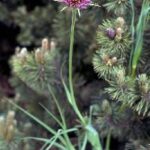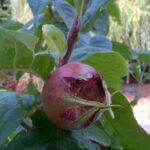Salsify Can Satisfy
October 27, 2021
This fall I made the best batch of cooked greens! The secret ingredient? Salsify. Wow!
Chefs (mostly from Britain) warn that the peeled root turns brown “at an alarming rate”. They advise to drop the peeled root quickly into water with lemon. I followed their instruction, then chopped the root to add to the greens.
The taste of salsify is mild; some say it reminds them of oysters. The bottom line is, this pencil-like root plant enhances other flavors. Indeed.
But, the experiment didn’t end there. Remember the lemon water that the roots soaked in? I figured, since the root is nutritious, so should this red juice. What a bonus! The juice, warmed up, was mild and sweet and wonderfully flavorful.
for work parties
Please email to volunteer
freewayestatescommunityorchard@gmail
Salsify is similar to parsnips in nutritive value, being a little higher in protein. One cup of cooked salsify supplies 40 calories, 3.5 grams of protein, 3.8 grams of fiber, 20.4 grams of carbohydrate, 60 mg calcium, 19 mg magnesium, 1.7 mg iron, and 251 mg of potassium. https://horticulturecenter.illinoisstate.edu/gardens/documents/vegetables.pdf
What does it take to grow this plant? Not much, just patience; the plants take their time to mature. Plus, like many other root vegetables and tubers, water needs are moderate . And, salsify has no serious pests. http://www.gardenology.org/wiki/Salsify
Salsify can satisfy but so can the others from the underground: parsnips, beets, turnips, carrots, potatoes, onions, shallots, garlic … Give them all a try!
Ruth
Additional Information:
Purple Salsify (Tragopogon porrifolius L), belongs to the Asteraceae family). It was commonly used as a food plant in northern Europe in the middle ages. It subsequently spread world-wide, being brought to North America by early settlers in the West (Clark 1973; Fritz et al. 1992). Not long after its introduction to North America, it escaped cultivation. The North American Native Americans used it for food and chewed the milky stems to cure indigestion (Clark 1973). The Biology of Canadian Weeds
Research favors commercial crops like potatoes and cassava, not salsify. Many publications highlight the importance of roots and tubers for feeding the world’s population. https://www.fao.org/3/t0207e/t0207e04.htm
Potatoes, for instance, are considered among the most energy productive crops, producing 5,600 kcal/m3 of water, compared to 3860 in maize, 2300 in wheat, and 2000 in rice. https://link.springer.com/chapter/10.1007/978-3-030-45106-6_40
All root vegetables and tubers produce a lot of good nutrition, without taking up a lot of space!




How unbelievably cool!
Thanks, Ruth!
You all amaze me!!